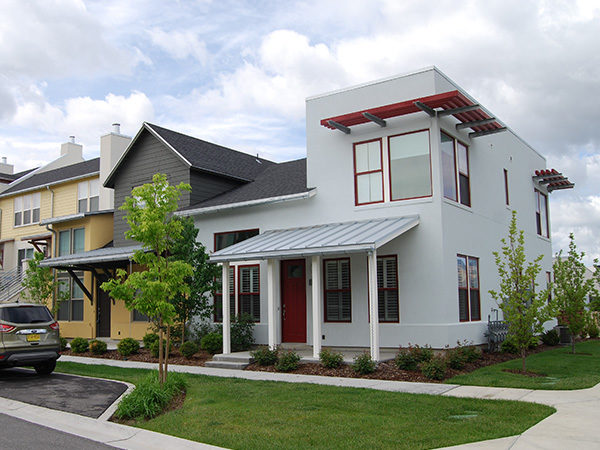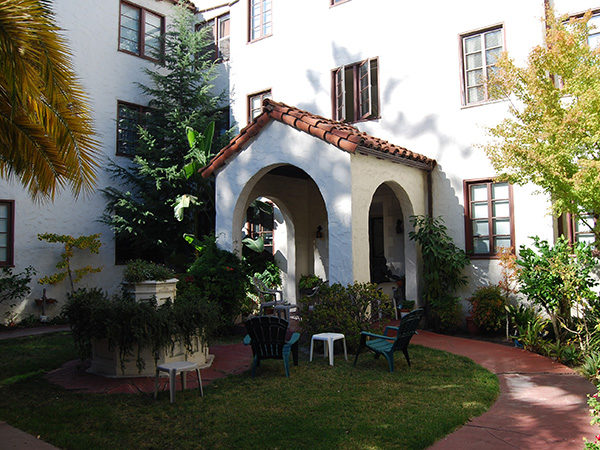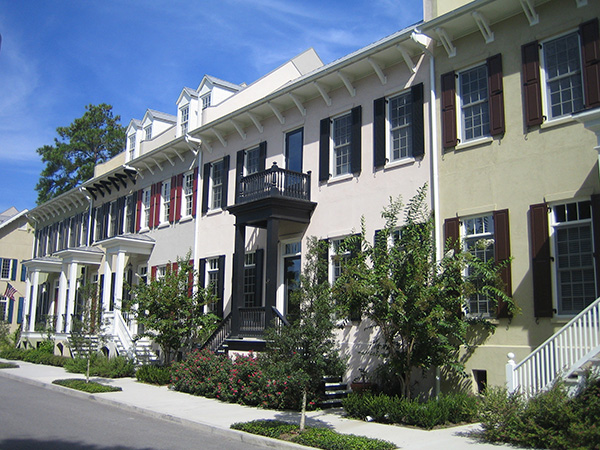Millennials
Today, more and more millennials—that cohort of tech-savvy young adults increasingly descending upon the housing market—are looking for living options with a special something. The ability to walk to neighborhood amenities—bars, restaurants, farmer’s markets, entertainment, and events—remains a strong factor in where millennials choose to live. With Great Recession memories lingering, many in this group remain thrifty and penny pinching; they want more for less when they rent or buy.
Enter Missing Middle Housing. Encompassing such types as duplexes, triplexes, and bungalow apartments, Missing Middle Housing can offer the feel—and many of the benefits—of single-family homes, while still giving these urbanites the walkability they love. And, since these units are often smaller than single-family homes, they’re much more within reach of the cash-strapped Gen Y-er. Moving into a unit in a small duplex or multiplex, designed to fit in with a neighborhood of other duplexes, townhouses, multiplexes, or single family homes, can be a way to get the charming feel of a stand-alone dwelling without having to take the leap to a large, single-family house.
Even more, since Missing Middle Housing types incorporate notions of community, intimacy, and timeless detail into their design, they can have that “it” factor that discriminating millennials love. A finely designed bungalow apartment, nestled in amongst an array of other uniquely architected units, can offer a real, authentic appeal—not a cookie-cutter box developed for the mass market. It’s micro-chic for the farmer’s market set.
“Best Fit” Missing Middle Types: Duplex/Triplex, Bungalow Court, Small Multiplex

Young Families
For young families with working parents, juggling the demands of work while carting kids to day care and doctors’ appointments—not to mention running errands and grocery shopping in between—can be a challenge. It may seem a single-family detached home, complete with a pair of minivans in the driveway for charioting around town, is the only answer.
But Missing Middle Housing types can be an ideal option for young families balancing the rigors of modern life. For starters, Missing Middle units offer the prospect of a carless or one-car household; since amenities young families need (doctors’ offices, grocery stores, pharmacies, family-friendly restaurants, for example) can be within walking distance, going car-light while living in a Missing Middle unit is a viable option.
Missing Middle units also offer the benefits of community. Courtyard apartments and bungalow courts, for example, feature units embracing a central space, which is designed to promote a sense of connectedness between residents. With this connectedness come benefits for young families—child care options, for example. Going out for the evening? Trade off babysitting duties with the neighbors. Or start a round-robin “kid share” day care program. The communal space these building types typically feature is perfect for pint-sized play time.
Homesteading in a live-work space can also be a great solution to allow working parents to achieve work-life balance. With live-work units, families can live above or directly adjacent to office or commercial space, so late nights at work for mom and dad can be punctuated with a stop upstairs for dinner with the family or a quick check-in on the kids’ nightly homework assignments.
Shared buildings can also mean less work for busy families because household maintenance—gardening, gutter cleaning, and so forth—can often be covered by shared building covenants, HOAs, or even building co-ops. Of course, many of these benefits are offered in large, mid-rise or high-rise condominiums, but Missing Middle Housing types offer these amenities while maintaining the intimate feel of many single-family homes. In essence, Missing Middle units offer the best of both ends of the housing spectrum for young families.
“Best Fit” Missing Middle Types: Courtyard Apartments, Bungalow Court, Live/Work, Townhouse

Empty Nesters
Once the kids have left for college or the real world, empty nesters are often left in search of housing options more appropriate to their downsized family unit. With their emphasis on community and shared space, Missing Middle Units can be a wonderful housing alternative for those in their sunset years.
Primarily, Missing Middle units offer the opportunity to become part of a community—but not an over-the-hill one. With the kids gone, feelings of disconnection and even sadness can ensue. Small multiplexes or courtyard apartments can be ideal options for couples looking to build new connections. Often, these multi-unit types attract a diversity of neighbors of all ages and backgrounds. Surrounded by neighbors both young and old, couples can live in a community abuzz with activity. It’s highly desirable if “retirement home” elicits feelings of aversion or a simple “not yet.”
Also, central to the appeal of Missing Middle units is their promise of increased walkability. Because these units are situated within walking distance to key amenities, Missing Middle dwellers can rely less and less on their cars to get them where they need to go. It’s an ideal and safe option for the elderly who may see driving as an increasingly arduous or difficult task.
Lastly, many aging home seekers today came of age when many Missing Middle types—duplexes, multiplexes, bungalow courts, and townhouses—were common. Over the past decades, these buildings have become an increasing rarity in new construction. For many, the nostalgia factor can play in: it may simply be nice to live like it was in the good ol’ days.
“Best Fit” Missing Middle Types: Courtyard Apartment, Small Multiplex, Townhouse

Still not sure if Missing Middle Housing fits your needs? Visit missingmiddlehousing.com for more information, or you can reach out to us directly.